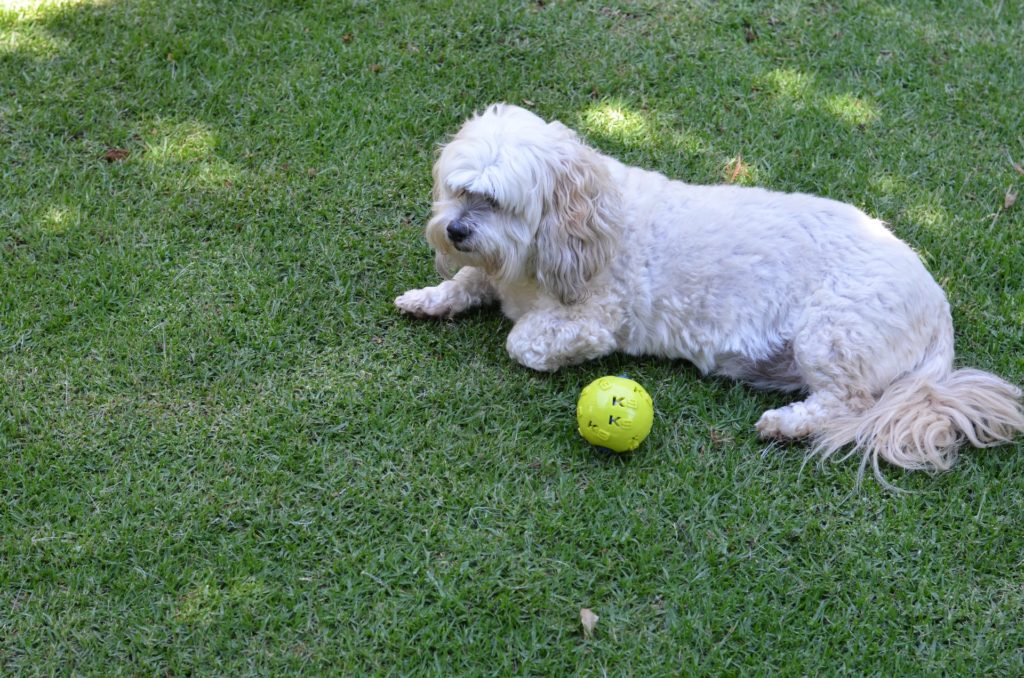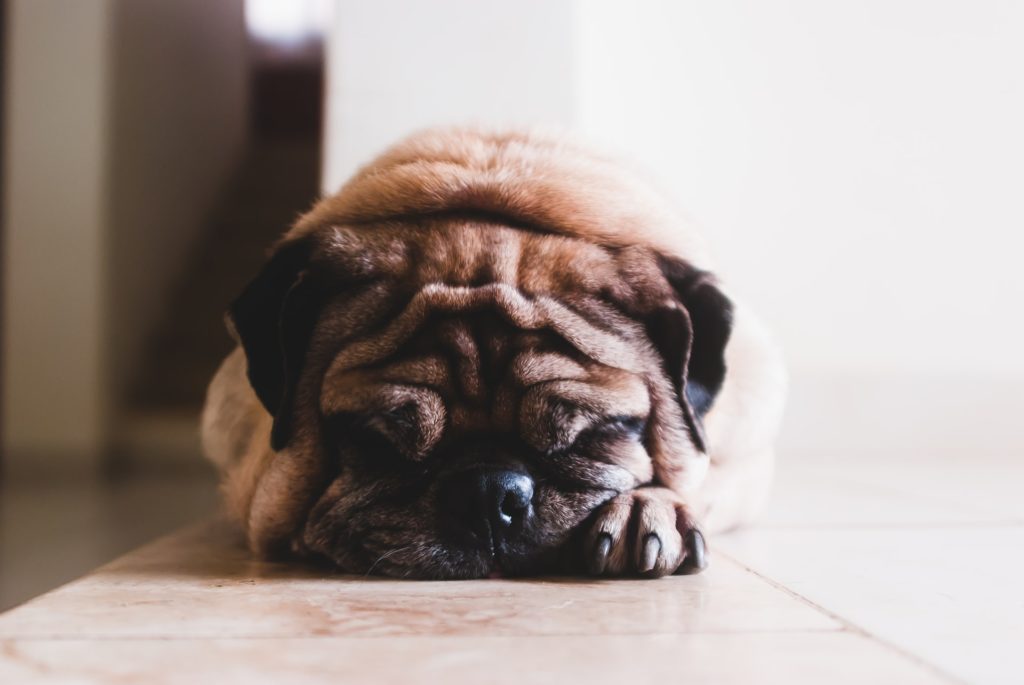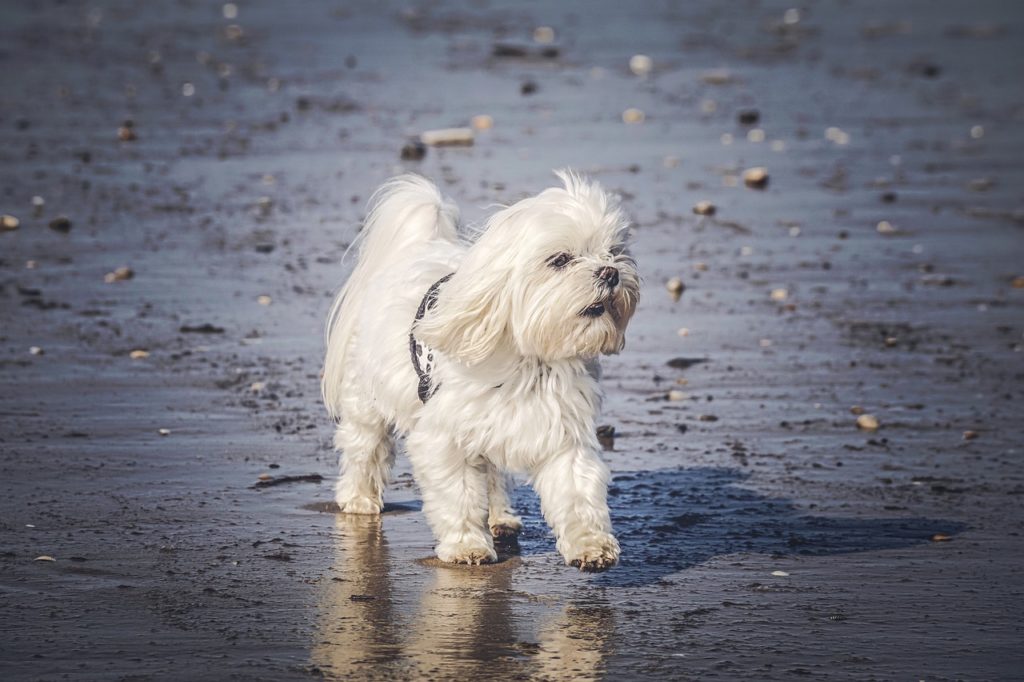As a rule, a Maltese needs to be exercised twice a day. This should ideally be done in the forest or where he can walk without a leash. The Maltese needs enough physical and mental exercise.
Your pet needs daily exercise. In addition, your dog can romp around in the garden or you can go to a fenced exercise area.
Your dog needs to go outside at least twice a day.
Beyond that, you can decide according to your dog whether you go more often and how long your rounds will be.
Walking – When does the dog need to go out?
The question of how often a dog should go out depends crucially on its individual needs. Some dog breeds need a lot of exercise due to their special urge to move, while others are content with smaller rounds.
When a dog needs to go outside is also very individual. Decisive factors include cleanliness and walk training.
As a rule of thumb, however, dogs can last five to six hours before the next business is due.
This also tells you how often a dog should go out every day. According to this, you should plan at least four to five rounds per day.

Ideally, you should schedule your dog’s walks so that he does not have to go out at night. In this context, it is important that the most urgent walk is in the morning. The walk after getting up must be integrated into the daily schedule.
As a rule, a routine rhythm is established after a certain time, so that the morning round takes place at 6:00 a.m. every day, for example.
Dogs make themselves known when they have to go out
Normally, every dog makes itself known as soon as it has to go out. However, this only applies to dogs that have already completed their cleanliness training. It is not yet to be expected from puppies. As soon as the intervals between rounds become too long, dogs start whining, possibly barking, are restless and otherwise draw attention to themselves.
Some dogs may scratch at the door, others may put the leash at their master’s feet. Pay attention to how your dog makes itself known and don’t let it get that far in the first place.
Your dog will be in better health if you react before your dog even contacts you.
If you are going to be away for a long time and your dog has to wait for you at home, find out here how long your dog can be left alone.
Whether young or old – all dogs need to go out.
Puppies and seniors need more exercise
A puppy stays with the breeder until at least 8 weeks. At least with a good breeder. After that, you can take your dog with you.
Once you have arrived at your new home, the first few weeks are especially important. During this time, you must pay special attention to the walks. Everything needs to be explored, from traffic to the forest.
Experience shows that puppies need more walks than adult dogs. Until they are truly house-trained, it is recommended that you take your fur friend out at least every two hours.
This way puppies learn that they have to do their business outdoors and not indoors.
The time between each round can be extended individually over time. In addition to puppies, seniors also need to go outside more often.
Your dog is getting old and counts as a senior dog if your dog is over 12 years old.
With age, dogs get difficulties to control their urge for a longer period of time. It’s a good idea to cater to your dog’s individual needs.
You could take your dog out more often, but for shorter periods.
If the dog doesn’t get out – what can happen?
If your dog doesn’t get out enough, it will sooner or later do its business indoors.
However, what is much more decisive and to the dog’s disadvantage – lack of exercise leads to considerable limitations. Dogs that do not get out or only get out too rarely are often overweight, which has an impact on their health.
In addition, in such cases dogs tend to engage in destructive behaviour, for example by destroying things or starting to go berserk.

Among other things, shoes or furniture may be chewed up. Furthermore, the lack of exercise leads to aggression towards people and other animals in the long run.
This is how you can keep your dog busy indoors
Some dogs begin to withdraw because they are not physically and mentally stimulated enough. In this case, the behaviour resembles a typical depression.
Other dogs, on the other hand, become hyperactive. Finally, the muscles of the affected dog can stiffen, which leads to considerable pain. Further illnesses of the four-legged friend are also possible due to lack of exercise and too few walks.
For example, bladder or kidney diseases can occur due to continuous stopping.
To prevent this from happening to your four-legged friend, make sure he gets enough exercise!
If you don’t have enough time, you can look for someone who will walk your dog for a small fee.
Typical characteristics of the Maltese breed
- White coat
- Size 21 to 25 cm
- Weight 3 to 4 kg
- Life expectancy 13 to 15 years
The most striking feature of the Maltese is its white coat, which frames the body in long strands. If not trimmed, it is almost floor-length.
The size varies between 21 and 25 centimetres, depending on the sex. Maltese are slender, but do not appear petite or slender. This dog breed weighs between three and four kilograms. The body is longer than it is high.

The head of the Maltese is relatively broad, the top of the skull is curved and blends into the straight nose. It is also black and voluminous.
The eyes are dark, very large and round. The rims of the eyes are even darker, giving the Maltese his characteristic expression. The ears hang and reach approximately to the nose.
The life expectancy of the Maltese is high. They can live from 13 to 15 years.
Special character traits of the Maltese
- cuddly
- alert
- weak hunting instinct
- clings to his master
The Maltese is cuddly, yet agile and active. He has a close bond with his humans. Towards strangers he is reserved and shy.
If the Maltese is well socialised, he gets along well with other dogs, cats and other pets.
The Maltese loves to be petted and caressed. The dog breed is small, but still a full-fledged dog and must therefore have enough exercise and activity.
He is intelligent and has a keen sense of smell. His hunting instinct is weakly developed.
On the whole, the Maltese is easy to train.
Here we have summarized our most popular post for you in a great overview:



